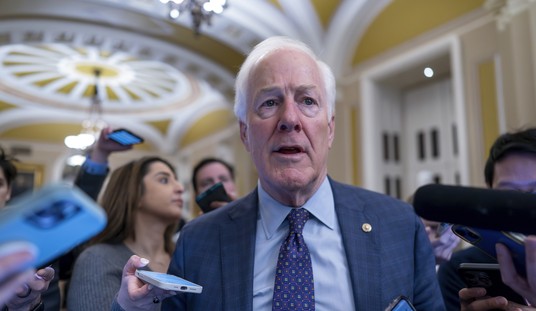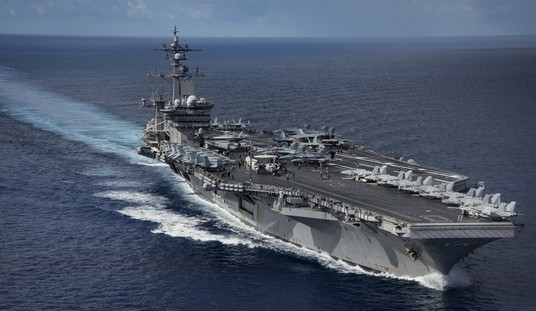The Army plans to reduce its active-duty force by as many as 90,000 troops as the Trump administration requires Pentagon budget cuts and shifts its strategic focus from Europe and Third World counterinsurgency operations to confronting Chinese expansion. This comes on the heels of Biden reducing the Army by 24,000 in 2024 to cover up the recruiting disaster; see Army Follows the Air Force's Lead by Calling Retirees Back to Active Duty – RedState.
Secretary of Defense Pete Hegseth announced he planned an 8 percent cut in Defense spending in February.
This is not what is driving Army force reductions. The administration has been very clear that it no longer considers NATO or counterinsurgency operations a priority. The incoming Undersecretary for Policy, Elbridge Colby, has made it abundantly clear that the Indo-Pacific Theater is America's primary focus.Hegseth said beginning immediately, the Pentagon will pull 8% — or roughly $50 billion — from nonlethal programs in the current budget and refocus that money on President Donald J. Trump's "America First" priorities for national defense.
"That's not a cut; it's refocusing and reinvesting existing funds into building the force that protects you, the American people," Hegseth said.
He also said there are certain areas where funds will not be refocused — border protection, fighting transnational criminal organizations, nuclear modernization, submarine programs, missile defense, drone technology, cybersecurity, core readiness and training and the defense industrial base among them.
Colby believes that the military threat posed by Beijing is far more potent and concerning than is generally understood in Washington. In turn, he argues that US military resources need to be redeployed from Europe and the Middle East to the Pacific in order to better deter China. American military resources, especially naval resources, are currently spread too thin; amid an inadequate defence industrial base which produces warships far too slowly and expensively, this overstretch is increasing maintenance delays and crew exhaustion. At the same time, the People’s Liberation Army is ramping up its production of highly capable missiles and warships, demonstrating the likelihood that the US military would lose a war over Taiwan.
Colby's top deputy, former Josh Hawley (R-MO) national security adviser and current Deputy Under Secretary of Defense for Policy Austin Dahmer, has been even clearer about the Army's looming irrelevance.
In 2023, he penned a white paper for the Marathon Initiative, a Republican-centric national security think tank, that makes the case for dramatically scaling back the Army's size in favor of reallocating money spent on the land force to the Air Force and the Navy -- arguing that in a war with China, many of the Army's capabilities, such as the Paladin tracked artillery vehicle, would be obsolete in island-hopping campaigns.
"One of the largest bill payers in resourcing the strategy of denial should be the Army. This is because the size of the Army's large-scale land maneuver forces is principally scaled to the threat of Russian invasion of NATO territory," Dahmer wrote in Resourcing the Strategy of Denial: Optimizing the Defense Budget in Three Alternative Futures. "Large-scale land maneuver forces are of much less utility in the vast maritime and littoral theater of the Western Pacific."
When the Army went through its "Peace Dividend" phase, one senior Pentagon civilian said, "Without a Soviet threat in Europe, there is no logical floor to the size of the Army." The same is true today. It is difficult to find a role for a large Army if the "main adversary" is China. The anticipated cuts will reduce the Army's current strength of 450,000 to 360,000 - 420,000. These are uncharted waters. To put those numbers in context, the Army hasn't been that small since 1939.
Managing the reduction will require strength and integrity from everyone involved. The Army will strive to keep higher headquarters fully staffed while reducing tactical units to cadre status or retiring unit colors.
If I step out of my green suit for a moment and look at the big picture, I can't disagree. The Navy is short of ships, particularly Merchant Marine vessels that keep the Navy operational. Currently, the Navy leases civilian oilers to refuel its surface combatants, which is not sustainable in wartime. It is also scrapping ships faster than it is commissioning them, and it literally has more admirals than warships. The Air Force is short on strategic airlift and tankers. As we are currently configured, the Chinese could push us out of the Western Pacific without much effort.
As with anything else, this strategy comes with risk. It is predicated on the idea that a much smaller Army will be adequate to meet national security demands everywhere else. Looking at our track record post-World War II, I'm not sure we've been all that successful in predicting where conflicts will break out.
RedState is your leading source for news and views on administration, politics, culture, and conservatism. If you like our reporting and commentary, please become a member and support our efforts. Use promo code FIGHT to get 60% off your membership.














Join the conversation as a VIP Member